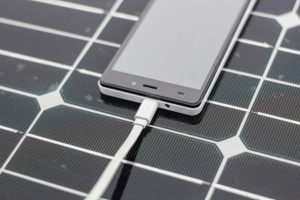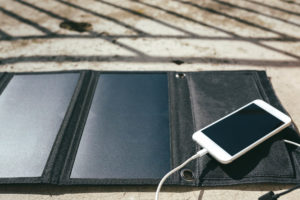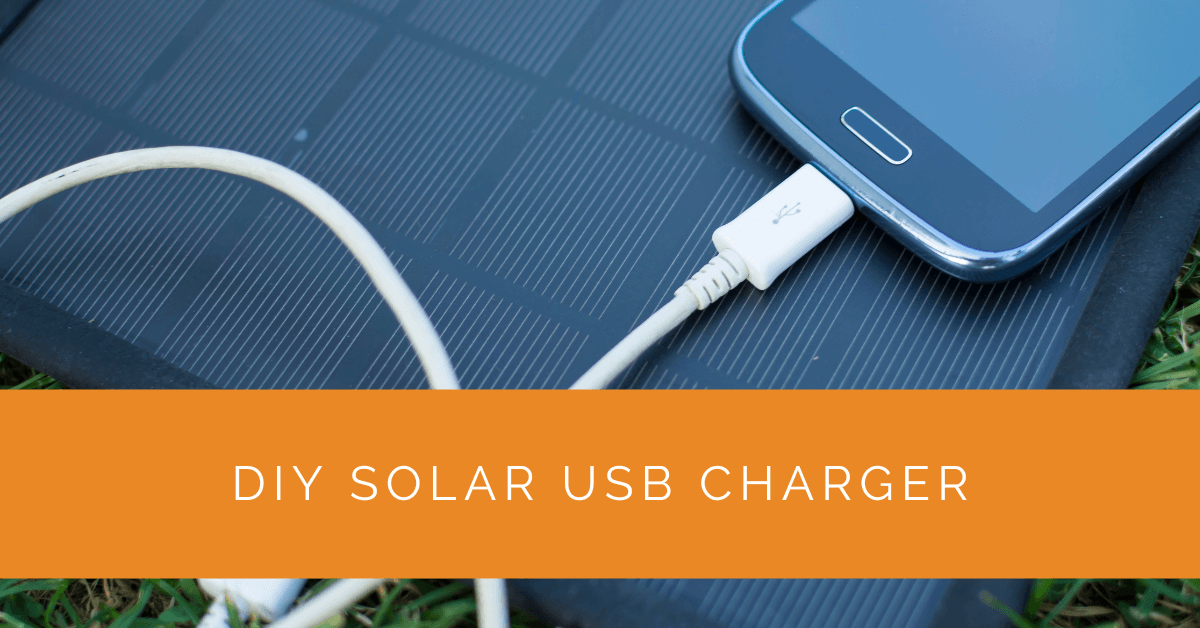In an era where portable devices have become integral to our daily lives, the need for sustainable and off-grid charging solutions has never been more apparent. Imagine charging your devices anytime, anywhere, without relying on traditional power sources. Enter the DIY Solar USB Charger – a powerful yet eco-friendly solution that harnesses the sun’s energy to keep your devices powered up on the go. This comprehensive guide will walk you through the step-by-step process of building your own DIY solar USB charger. From gathering the necessary materials to testing its functionality, we will provide detailed instructions, expert tips, and insights to help you create a reliable and efficient charging solution. Get ready to unlock the potential of solar power and enjoy the freedom of charging your devices with renewable energy. Let’s dive in and embark on this exciting journey of creating your DIY solar USB charger.
Contents
- 1 Step 1: Gathering the Materials
- 2 Step 2: Building the Solar Panel Setup
- 3 Step 3: Assembling the USB Charger Circuit
- 4 Step 4: Constructing the Solar-Powered USB Charger
- 5 Step 5: Testing and Using the DIY Solar USB Charger
- 6 Case Study: Building a DIY Solar USB Charger for Off-Grid Convenience
- 7 Expert Insights From Our Solar Panel Installers About DIY Solar USB Charger
- 8 Conclusion
Step 1: Gathering the Materials
The first step in building your DIY solar USB charger is to gather all the necessary materials. By carefully selecting the components, you can ensure the reliability and efficiency of your charger. Let’s take a closer look at each component:
Solar Panel
Choose a solar panel that suits your charging needs. Consider factors such as power output, size, and durability. Due to their high efficiency, monocrystalline or polycrystalline panels are commonly used for DIY solar projects.
USB Charger Module
Select a USB charger module that is compatible with your devices. Look for one with multiple USB ports to charge multiple devices simultaneously. Ensure that it has built-in voltage regulation to protect your devices from overcharging.
Battery Pack
A rechargeable battery pack is essential for storing the panel’s solar energy. Opt for a battery pack with sufficient capacity to meet your charging requirements. Consider factors like voltage, capacity, and the type of battery (e.g., lithium-ion) for long-lasting performance.
Solder and Soldering Iron
You’ll need solder and a soldering iron to connect the various components. Ensure you have a quality and lead-free soldering iron for safe and reliable connections.
Buck Converter
A buck converter is crucial for regulating the voltage output from the solar panel and matching it to the USB standard voltage (typically 5V). Choose a buck converter with a suitable input and output voltage range for optimal performance.
Once you have gathered all the necessary materials, you can move on to the next step: building the solar panel setup.
Step 2: Building the Solar Panel Setup
Building a robust and efficient solar panel setup is crucial to harnessing the maximum power from the sun. Let’s explore the process in detail:
Mounting the Solar Panel
Select an appropriate location for mounting the solar panel. It should receive maximum sunlight exposure throughout the day. Ensure that the mounting surface is secure and sturdy. Consider using mounting brackets or a frame to keep the panel in place.
Wiring the Solar Panels
You can wire multiple solar panels in parallel to increase the power output. This configuration allows for a higher current while maintaining the same voltage. Connect the positive terminals of all the panels and the negative terminals. Use appropriate wiring and connectors to ensure secure connections.
Connecting the Solar Panel to the Charger Module
Connect the positive and negative terminals of the solar panel to the corresponding terminals on the charger module. Ensure the polarity is correct to avoid any damage to the components. Use suitable wiring and connectors to establish a secure and reliable connection.
Voltage Considerations
Measure the output voltage of the solar panel using a multimeter. Ensure that the voltage falls within the charger module’s and buck converter’s acceptable range. Adjust the wiring configuration or add diodes to achieve the desired voltage level if necessary.
Following these detailed steps, you can build a robust solar panel setup that maximizes the power output and efficiently captures solar energy. Let’s proceed to the next step: assembling the USB charger circuit.

Step 3: Assembling the USB Charger Circuit
Assembling the USB charger circuit is critical in building your DIY solar USB charger. This involves connecting the various components together to ensure proper functionality and compatibility with your devices. Let’s dive into the detailed process:
Prepare the Charger Module
Start by preparing the USB charger module. Carefully examine the module and identify the input and output terminals. The input terminals will be connected to the solar panel, while the output terminals will provide the charging current to your devices. Take note of the voltage specifications to ensure compatibility with the rest of the components.
Solder the Components
Using your soldering iron and solder, carefully solder the necessary wires and components onto the charger module and buck converter. Follow the manufacturer’s instructions and reference any wiring diagrams provided. Take extra care to make strong, secure connections to prevent loose or faulty wiring.
Connect the Buck Converter
The buck converter is essential for regulating the voltage output from the solar panel to a stable 5V, the standard USB charging voltage. Connect the buck converter’s input terminals to the solar panel’s output terminals. Ensure the polarity is correct, as reversing the connection could damage the components. Use appropriate wiring and connectors for a reliable connection.
Test the Circuit
Before proceeding further, it’s essential to test the circuit’s functionality. Use a multimeter to measure the voltage output at the charger module’s output terminals. Ensure that the voltage matches the desired 5V output. Also, check the current output to confirm that it meets the requirements of your devices. Make any necessary adjustments or troubleshoot any issues that may arise during testing.
By following these detailed steps and taking the time to ensure proper connections, you can assemble a robust and efficient USB charger circuit. Let’s move on to the next step: constructing the solar-powered USB charger.
Step 4: Constructing the Solar-Powered USB Charger
In this step, you’ll combine all the components to create a functional and portable solar-powered USB charger. Pay attention to the following details to ensure a well-built charger:
Enclosure Selection
Choose a suitable enclosure that will protect the components from the elements and provide durability. Look for weather-resistant enclosures, sturdy, and appropriately sized to accommodate the components comfortably.
Positioning the Components
Carefully position the charger module, buck converter, and battery pack inside the enclosure. Ensure enough space to accommodate the components while allowing for proper ventilation to prevent overheating. Consider using adhesive or mounting brackets to secure the components in place.
Wiring the Components
Connect the charger module, buck converter, and battery pack using the appropriate wiring and connectors. Follow the wiring diagram or instructions provided by the manufacturers to ensure proper connectivity. Double-check the polarity and connections to avoid any short circuits or component damage.
Additional Features
You may incorporate additional features into your charger depending on your preferences and requirements. For example, you can add an on/off switch to control the charging process, indicator lights to display the battery status, or even a USB port for direct device charging. Ensure that these features are integrated securely and function as intended.
You’ll create a durable and functional device by carefully constructing the solar-powered USB charger with attention to detail. With the charger assembly complete, it’s time to move on to the final step: testing and using your DIY solar USB charger.

Step 5: Testing and Using the DIY Solar USB Charger
With your DIY solar USB charger fully constructed, it’s crucial to test its functionality before regular use thoroughly. Follow these steps to ensure optimal performance:
Charge Your Phone or Device
Connect your phone or device to the USB port of your DIY solar USB charger. Ensure the charger receives adequate sunlight or sufficient charge from the battery pack. Observe the charging process and monitor the device’s battery level. Note the time it takes to charge the device or reach the desired battery level fully.
Check Voltage and Current
Using a multimeter, measure the voltage and current output of the charger while it is connected to the device. Compare the measured values with the expected 5V output and the device’s charging requirements. This step ensures that the charger provides the power to charge your device effectively.
Evaluate Efficiency and Performance
Assess the charger’s efficiency by monitoring how effectively it converts solar energy into electrical power for charging your device. Consider factors such as the charging time, the stability of the charging current, and the overall performance. Note any areas where the charger exceeds expectations or improvements could be made.
Troubleshooting and Adjustments
If you encounter any issues during the testing phase, take the time to troubleshoot and make necessary adjustments. Check for loose connections, faulty wiring, or any signs of overheating. Ensure that all components are functioning correctly and that the charger operates safely. Seek guidance from experts or online communities if you need assistance troubleshooting specific issues.
Congratulations! You have successfully built your own DIY solar USB charger. By utilizing solar power, you now have a sustainable, off-grid charging solution for your portable devices. Embrace the benefits of renewable energy and reduce your environmental impact while enjoying the convenience of charging your devices anywhere under the sun.
Case Study: Building a DIY Solar USB Charger for Off-Grid Convenience
Background
At Solar Panels Network USA, we are dedicated to promoting sustainable energy solutions that empower individuals to harness the sun’s power for everyday needs. One of our recent projects involved building a DIY solar USB charger, providing a portable and eco-friendly solution for charging devices off the grid. This case study outlines our journey from concept to implementation, showcasing the benefits and practical applications of a solar-powered USB charger.
Project Overview
The goal of this project was to create a DIY solar USB charger that could efficiently and reliably charge portable devices using solar energy. We aimed to design a system that was cost-effective, easy to assemble, and capable of providing consistent power for various devices.
Implementation
Step 1: Gathering the Materials
We began by gathering the necessary materials, ensuring each component was chosen for its quality and compatibility. The key components included:
- Solar Panel: A high-efficiency monocrystalline panel for maximum energy capture.
- USB Charger Module: A module with multiple USB ports and built-in voltage regulation.
- Battery Pack: A rechargeable lithium-ion battery pack with sufficient capacity.
- Solder and Soldering Iron: For secure and reliable connections.
- Buck Converter: To regulate the voltage output from the solar panel to the USB standard.
Step 2: Building the Solar Panel Setup
We mounted the solar panel in a location with maximum sunlight exposure, ensuring it was secure and optimally positioned. Wiring the panels in parallel allowed us to increase the power output while maintaining the same voltage. We then connected the solar panel to the charger module, verifying the voltage and ensuring all connections were secure.
Step 3: Assembling the USB Charger Circuit
Next, we prepared the USB charger module and soldered the necessary wires and components. We connected the buck converter to regulate the voltage output and tested the circuit to ensure it provided the correct 5V output for USB charging. This step was critical for ensuring the charger could safely and efficiently power our devices.
Step 4: Constructing the Solar-Powered USB Charger
We chose a weather-resistant enclosure to protect the components and ensure durability. The charger module, buck converter, and battery pack were positioned inside the enclosure, allowing for proper ventilation and easy access. We incorporated additional features such as an on/off switch and indicator lights for battery status.
Results
Efficiency and Performance
The DIY solar USB charger demonstrated high efficiency, reliably charging various devices. The solar panel’s high-efficiency monocrystalline design ensured maximum energy capture, while the buck converter provided a stable 5V output. The charger module’s built-in voltage regulation protected devices from overcharging.
Cost-Effectiveness
Building the DIY solar USB charger was cost-effective, significantly reducing the overall cost compared to purchasing a pre-made solar charger. Sourcing individual components and assembling the system ourselves allowed us to allocate resources to other important aspects of our off-grid setup.
Portability and Convenience
The solar USB charger was lightweight, portable, and easy to carry, making it ideal for outdoor activities such as camping and hiking. Its ability to operate efficiently in remote locations provided a reliable power source for devices, ensuring we stayed connected and powered up off the grid.
Summary
Our DIY solar USB charger project at Solar Panels Network USA showcased the practical benefits and feasibility of solar-powered charging solutions. From gathering materials to building and testing the charger, we successfully created an efficient, cost-effective, and portable device. This project highlighted the importance of renewable energy in achieving energy independence and reducing environmental impact.
By following the steps and strategies outlined in this case study, individuals can embrace solar energy and create their DIY solar USB chargers, contributing to a greener and more self-reliant lifestyle. Embrace the power of the sun and enjoy the benefits of sustainable, off-grid charging for your devices.
Expert Insights From Our Solar Panel Installers About DIY Solar USB Charger
Creating a DIY solar USB charger is a fantastic project that demonstrates the practicality of solar power for everyday use. Understanding the components and their roles is crucial for building an efficient and reliable charger.
Senior Solar Technician
Choosing high-quality materials like efficient solar panels and reliable battery packs is essential for the success of your DIY solar USB charger. This ensures long-term performance and safety.
Solar Systems Engineer
Proper wiring and testing are vital steps in building a DIY solar USB charger. Ensuring all connections are secure and components are compatible can prevent issues and enhance the overall efficiency of your charger.
Renewable Energy Specialist
Conclusion
Building your own DIY solar USB charger allows you to tap into the abundant and renewable energy the sun provides. Following the step-by-step instructions outlined in this article, you can create a sustainable and portable charging solution for your devices. With the ever-increasing demand for eco-friendly and off-grid alternatives, a DIY solar USB charger is an excellent way to embrace solar power and reduce environmental impact.
Remember, the possibilities for customization and further exploration are endless. You can experiment with different solar panel configurations, incorporate additional features, or even integrate the charger into other devices. Embrace the power of solar energy and embark on your journey to build a DIY solar USB charger today!
About the Author
Solar Panels Network USA stands at the forefront of solar energy solutions, driven by a team of seasoned solar engineers and energy consultants. With over decades of experience in delivering high-quality solar installations and maintenance, we are committed to promoting sustainable energy through customer-centric, tailored solutions. Our articles reflect this commitment, crafted collaboratively by experts to provide accurate, up-to-date insights into solar technology, ensuring our readers are well-informed and empowered in their solar energy decisions.

